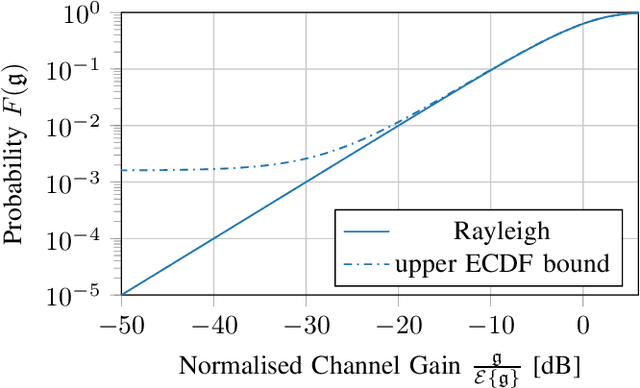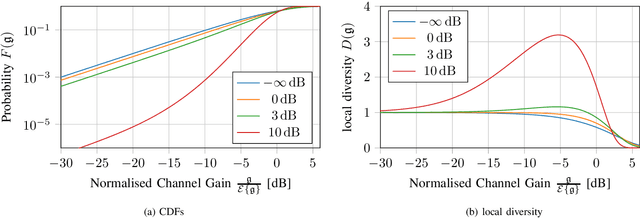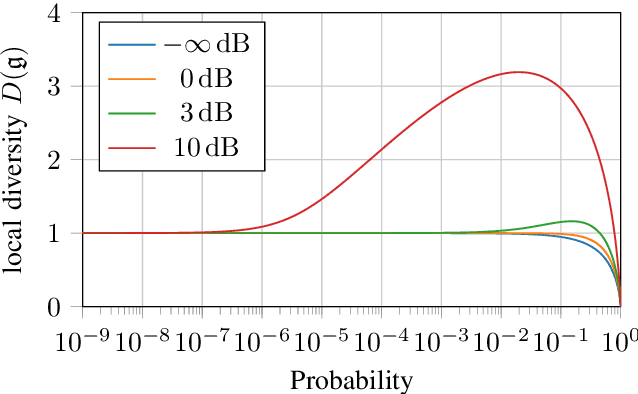Local Diversity and Ultra-Reliable Antenna Arrays
Paper and Code
Aug 02, 2021



Ultra-reliable low-latency communication enables new use cases for mobile radio networks. The ultra-reliability (UR) regime covers outage probabilities between $10^{-9}$ and $10^{-5}$, obtained under stringent latency requirements. Characterisation of the UR-relevant statistics is difficult due to the rare nature of outage events, but diversity defines the asymptotic behaviour of the small-scale fading distributions' lower tail. The UR-relevant regime in large-scale antenna systems behaves differently from the tail. The generalising local diversity at a certain outage probability shows this difference clearly. For more than four independent antenna elements, the classic diversity overestimates and underestimates the slope of the cumulative density function for weak and strong deterministic channel components, respectively.
 Add to Chrome
Add to Chrome Add to Firefox
Add to Firefox Add to Edge
Add to Edge